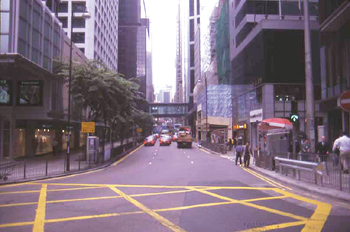5. WHAT DIFFERENT TYPES OF LANDSCAPE ARE THERE IN HONG KONG?
Landscape Classification
Landscape is composed of, and given its character, by a number of natural and human features. The interaction of all these features creates the character of our landscapes. A list of these features is shown in Table 1.
Landscape Character Types
Based on these features, landscape in Hong Kong can be grouped or 'classified' into common Landscape Character Types (LCTs), which recur throughout the territory.
LCTs are areas of landscape which have a broadly similar pattern of elements in terms of features, landform, vegetation, landuse, built form, etc. in every area where they occur.
Each particular area of landscape may not be exactly identical, but a common pattern can be identified. LCTs are given generic names describing their component parts, such as 'Grassy Hillside and Peaks', 'Mangrove', or 'High-rise Commercial Urban Landscape'.
Landscape Character Are as
The territory of Hong Kong can also be divided geographically into Landscape Character Areas (LCAs). LCAs are geographically unique areas which have their own particular character and which are different from anywhere else. They are given specific names which reflect their particular geographical locations, such as 'Tai Mo Shan Peak', 'Mai Po Wetlands', or 'Central Commercial District'.
Any given area of landscape in Hong Kong falls within an LCA, but is also at the same time, an example of a particular LCT. For example, Repulse Bay Beach can be described as a unique LCA since it has its own unique features and appearance that we recognise as being distinctive and different from its immediate surroundings. Yet it also shares many similarities with other beaches in Hong Kong and is thus an example of a 'Beach' LCT.
Table 1: Features which Contribute to the Character of Different Landscapes
Natural Features Human Features Geology Altitude
Slope
Soil
Natural Hydrological Features
(such as streams, rivers,
ponds and lakes)Vegetation Types
Ecological Habitats
Transportation Features
(including roads and railways)Built Form
Land Use
Features of Cultural/
Heritage Value
(including historic buildings,
fung shui woodlands)Planned/Ongoing Development
Artificial Hydrological Features
(features such as fish ponds,
reservoirs and nullahs)
The breakdown of the landscape into LCTs and LCAs can be carried out at a number of different scales from regional to local. A typical relationship between LCTs and LCAs at the local level is illustrated in Figure 1.
Initial work during the study suggests that Hong Kong's landscape can be divided at local level into some 67 LCTs or different types of generic landscape (such as Beach, Industrial Estate, etc.). These in turn are expected to be manifested in over 900 LCAs or different geographical landscape units.
A comprehensive classification of Hong Kong's different landscape types at various scales is provided in Table 2.
Figure 1: Relationship between LCTs and LCAs (at local level)

Examples of the different LCTs which have already been identified are shown below. LCAs will be identified as the study progresses.



